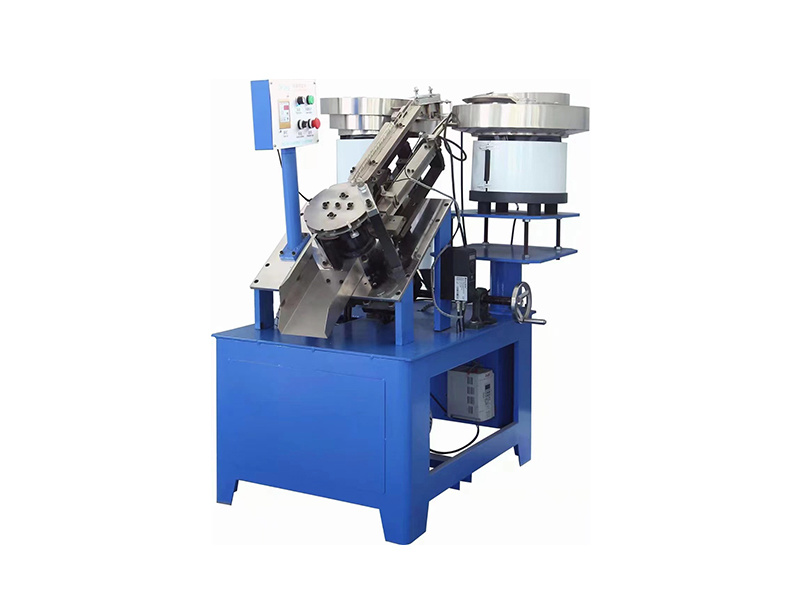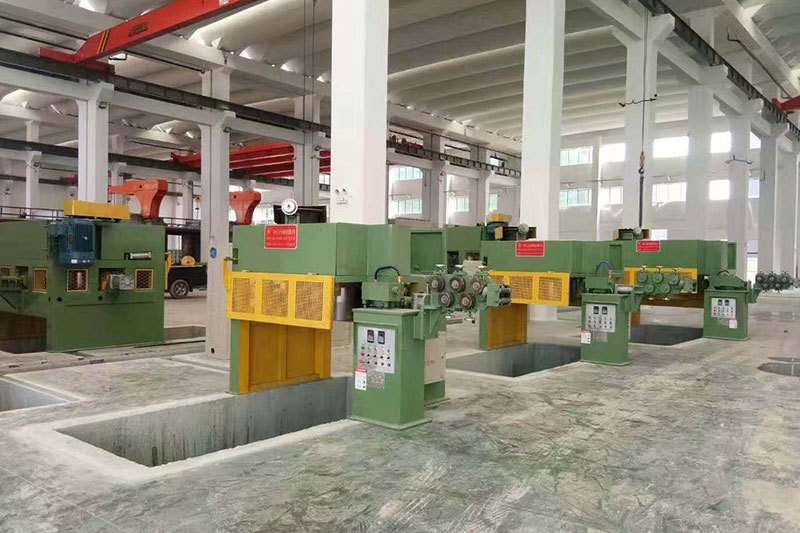Why Every Workshop Needs a Chamfering Machine: Key Benefits Explained
Summary:
Why Every Workshop Needs a Chamfering Machine: Key Benefits Explained
Table of Contents
1. Introduction to Chamfering Machines
2. What is a Chamfering Machine?
3. Overview of Benefits
4. Enhanced Precision and Accuracy
5. Improved Safety in the Workshop
6. Time Efficiency in Operations
7. Cost-Effectiveness of Chamfering Machines
8. Versatility in Applications
9. Choosing the Ri

Why Every Workshop Needs a Chamfering Machine: Key Benefits Explained
Table of Contents
- 1. Introduction to Chamfering Machines
- 2. What is a Chamfering Machine?
- 3. Overview of Benefits
- 4. Enhanced Precision and Accuracy
- 5. Improved Safety in the Workshop
- 6. Time Efficiency in Operations
- 7. Cost-Effectiveness of Chamfering Machines
- 8. Versatility in Applications
- 9. Choosing the Right Chamfering Machine for Your Workshop
- 10. Maintenance Tips for Longevity
- 11. Conclusion
- 12. Frequently Asked Questions
1. Introduction to Chamfering Machines
In the realm of manufacturing and workshop operations, every tool plays a crucial role in ensuring efficiency and precision. Among these tools, the chamfering machine stands out as an indispensable asset for various applications. This article delves into the compelling reasons why **every workshop should integrate a chamfering machine** into its operations, highlighting its key benefits and features that can significantly enhance your productivity.
2. What is a Chamfering Machine?
A chamfering machine is a specialized tool designed to create beveled edges on workpieces. These machines can handle a variety of materials, including metals, plastics, and composites. By removing sharp corners and creating angled edges, chamfering machines improve safety, enhance the fit of components, and facilitate the assembly process. Understanding the functionality of this tool is paramount for workshop owners aiming to streamline their operations.
3. Overview of Benefits
The integration of a chamfering machine offers a multitude of benefits that can transform workshop dynamics:
- **Enhanced precision** in edge treatment
- **Improved safety** for operators
- **Time efficiency** through faster processing
- **Cost-effectiveness** in production
- **Versatility** in applications
Each of these elements plays a significant role in optimizing workshop operations, making the chamfering machine a worthwhile investment.
4. Enhanced Precision and Accuracy
One of the standout features of chamfering machines is their ability to deliver **unmatched precision**. When creating beveled edges, accuracy is critical. A chamfering machine allows operators to set exact angles and depths, leading to consistent results that meet stringent quality standards. This level of precision is especially vital in industries such as aerospace and automotive, where component fit and finish can directly impact safety and performance.
By investing in a chamfering machine, workshops can reduce the risk of human error associated with manual chamfering methods. Automation and precision engineering ensure that each piece is treated uniformly, enhancing the overall quality of the final product.
5. Improved Safety in the Workshop
Safety is paramount in any workshop environment. Sharp edges can pose significant risks to operators, leading to injuries. Chamfering machines help mitigate these risks by removing sharp corners, thereby creating smoother transitions on workpieces. This improvement not only enhances the safety of the product but also reduces the likelihood of accidents during handling and assembly.
Additionally, many modern chamfering machines come equipped with safety features such as guards and automatic shut-offs. These enhancements contribute to a safer working environment, allowing operators to focus on their tasks without the worry of injury.
6. Time Efficiency in Operations
Time is a precious commodity in any workshop. The ability to complete tasks quickly without compromising quality can significantly impact productivity. Chamfering machines excel in this regard, offering rapid processing times that outpace manual methods. With automated settings, workshops can achieve high-volume outputs while maintaining consistency across batches.
Moreover, chamfering machines reduce the need for secondary processes. By incorporating chamfering directly into the production line, workshops can streamline their operations, saving both time and labor costs. This efficiency translates into faster project turnarounds and improved customer satisfaction.
7. Cost-Effectiveness of Chamfering Machines
While the initial investment in a chamfering machine may seem substantial, the long-term cost benefits are undeniable. By enhancing productivity and reducing labor costs, workshops can achieve a favorable return on investment (ROI). The durability of these machines also means fewer replacements and repairs over time, further contributing to cost savings.
Additionally, the improved quality of the finished product can lead to higher customer satisfaction and repeat business. In competitive markets, having a reliable and efficient chamfering machine can set your workshop apart from the competition.
8. Versatility in Applications
Chamfering machines are not limited to a single type of material or application. Their versatility makes them suitable for a wide range of industries, including metalworking, woodworking, and plastics manufacturing. Whether you're producing components for machinery, furniture, or automotive parts, a chamfering machine can cater to your specific needs.
Furthermore, many modern chamfering machines offer adjustable settings, allowing operators to switch between different materials and sizes seamlessly. This adaptability enhances the workshop's capabilities, enabling it to take on diverse projects without the need for additional specialized tools.
9. Choosing the Right Chamfering Machine for Your Workshop
Selecting the ideal chamfering machine involves considering several factors:
- **Material Compatibility:** Ensure the machine can handle the materials you work with.
- **Size and Capacity:** Choose a machine that fits well within your workshop space and meets your production volume needs.
- **Features and Technology:** Look for machines with advanced features such as programmable settings and safety enhancements.
- **Brand Reputation:** Invest in a reputable brand known for quality and customer service.
Carefully evaluating these factors will help you choose a chamfering machine that aligns with your workshop's specific requirements.
10. Maintenance Tips for Longevity
To maximize the lifespan and performance of your chamfering machine, regular maintenance is essential:
- **Routine Cleaning:** Keep the machine free of debris and dust to prevent performance issues.
- **Lubrication:** Periodically lubricate moving parts to reduce friction and wear.
- **Calibration Checks:** Regularly check and calibrate the machine to ensure precision.
- **Inspection:** Conduct frequent inspections for any signs of wear or damage.
Following these maintenance tips will ensure that your chamfering machine remains in optimal working condition, providing consistent performance for years to come.
11. Conclusion
In conclusion, the **integration of a chamfering machine into your workshop** is not just a matter of convenience; it is a strategic investment that can enhance productivity, safety, and cost-effectiveness. The precision and efficiency offered by these machines can transform your manufacturing processes, positioning your workshop for success in a competitive landscape. As industries continue to evolve, embracing advanced tools like the chamfering machine will be essential for staying ahead of the curve.
12. Frequently Asked Questions
What materials can be processed with a chamfering machine?
Chamfering machines can handle a variety of materials, including metals, plastics, and composites, making them versatile tools in various industries.
How does a chamfering machine improve safety?
By removing sharp edges from workpieces, chamfering machines reduce the risk of injuries during handling and assembly, creating a safer workshop environment.
What factors should I consider when purchasing a chamfering machine?
Consider material compatibility, size and capacity, features and technology, and the brand's reputation to ensure you choose the right machine for your workshop.
How can I maintain my chamfering machine?
Regular maintenance includes routine cleaning, lubrication of moving parts, calibration checks, and inspections for wear or damage.
What is the ROI for investing in a chamfering machine?
While the initial investment may be significant, the increased productivity, reduced labor costs, and improved product quality can result in a favorable return on investment over time.
Latest News
AISEN Four axis nut tapping machine ready for shipment to Russia
Four axis nut tapping machine for DIN934 M8,M10 Standard hex nut is ready for shipping to Russia by land transportation.
AISEN machinery inverted wire drawing machine
We hope to cooperate with more customers for mutual development and benefits. You are welcome to contact us









